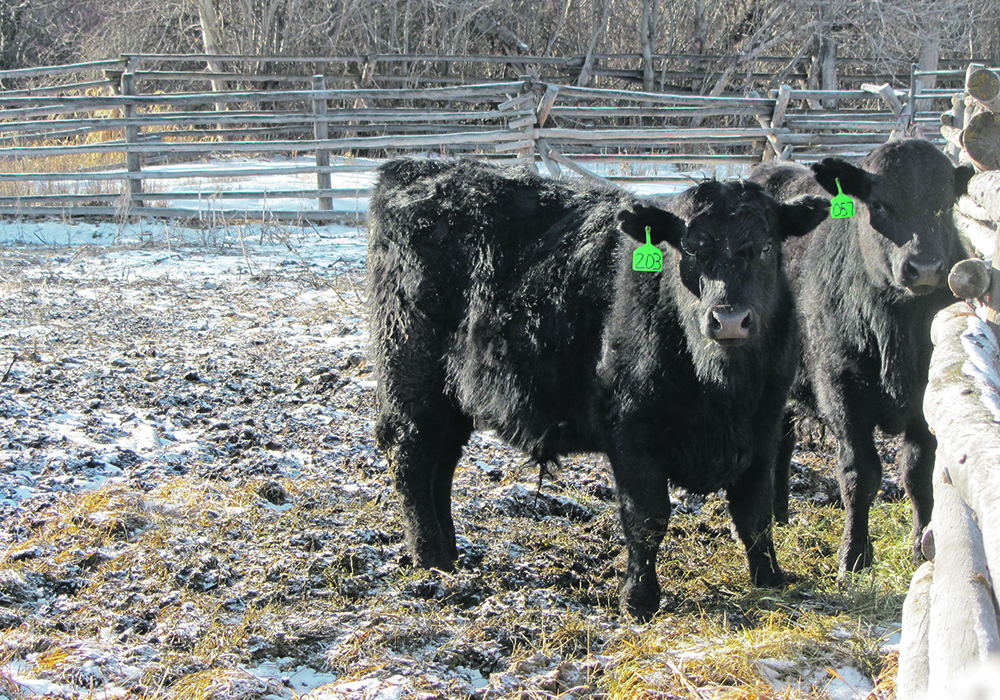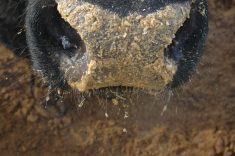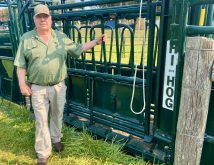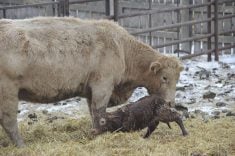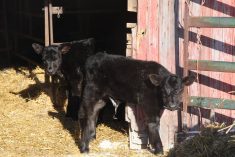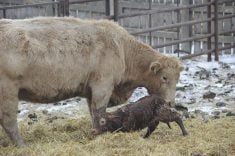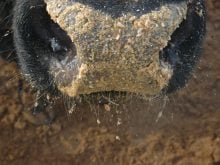Proper nutrition for young animals has been found to be vital for breeding success, but it should start before weaning
Years of research have shown that bulls with larger testicles tend to have more sperm and can settle more cows than bulls with small testicles.
Also, well-fed bulls generally reach puberty quicker than undernourished bulls.
Dr. John Kastelic, a veterinarian and professor in cattle reproductive health at the University of Calgary, has done a lot of research on bulls and nutrition.
“Historically people focused on nutrition after weaning. There’s been a lot of study on that, going back to the 1970s,” says Kastelic.
Read Also

Tick research from the University of Manitoba focuses on insects and testing
Manitoba researchers are looking into the effects of tick and fly disease in cattle.
In years past, most people ignored the bull calf’s pre-weaned nutritional needs and then provided them with high-energy diets after weaning.
“Back then, seedstock producers fed young bulls practically a feedlot ration to achieve gains up to four pounds per day. With performance testing, the goal was to identify bulls with ability to gain rapidly and efficiently, so they were fed high-energy diets.”
Buyers then expected bulls to be fat and selected those with high rates of gain.
Evidence shows that feeding high-energy diets after weaning causes rapid weight gain but may deposit fat in the scrotum, which insulates the testes and interferes with optimum sperm production.
These bulls have lower semen quality and higher risk for laminitis, joint problems, liver abscesses and rumenitis.
Producers now realize bulls should be fed for a long life of breeding rather than like a steer destined for slaughter.
“Unfortunately, some of the damage in overfat young bulls can be permanent,” says Kastelic.
“If bulls are fed post-weaning on a mostly forage diet, the bulls with genetic potential for rapid and efficient gain will still gain faster, although the difference between the top and bottom is smaller,” he added.
“You can still do a feed test, but on a forage-based ration with a modest amount of grain, and still identify the top-performing bulls. There is no excuse to push them with a feedlot ration because you can do permanent damage.”
Attention to nutrition is also important before weaning, Kastelic added. Since first-calf heifers generally don’t milk as well as older cows, the age of the dam influences young bulls’ scrotal circumference.
“Research in the 1970s at Colorado State University, looking at scrotal circumference in yearling bulls, came up with an adjustment formula. If the bull had a heifer for a mother, you add about 1.5 centimetres to the yearling minimum scrotal circumference and for a mature cow there’s no adjustment. If he had a really old dam, you also add a small amount of correction,” Kastelic says.
“The adjustment wasn’t widely applied; generally the minimums were the same for all bulls. Then studies in dairy bulls showed that bulls well fed early in life reached puberty quicker, had larger testes and produced more sperm.
“This was also our finding with beef bulls about 20 years ago. We discovered that if we fed them very well prior to about six months of age, we could hasten puberty a little, but more importantly we increased testes size and number of sperm produced.”
To prove this idea, they used a feeding trial with three groups of young bulls weaned at about six weeks of age. One group received 100 percent of protein and energy requirements. Another received 70 percent of those requirements and a third group 130 percent of requirements.
“We fed that ration from about eight weeks of age to about 25 weeks of age. We slaughtered the bulls at about 16 months of age and found that the bulls on the 130 percent ration — compared to the bulls fed 70 percent — reached puberty a month earlier and had testes about 20 to 30 percent bigger. They produced 20 to 30 percent more sperm than bulls on the 70 percent ration. In general, when testes are bigger, bulls produce more sperm,” Kastelic says.
“We found no difference in semen quality. There was no indication that feeding bulls extra at an early age in any way harmed sperm quality, but they had more sperm reserves and more quantity.”
Researchers monitored hormones important in development, especially luteinizing hormone.
“This hormone is released from the pituitary, a gland at the base of the brain, and goes to the testes and causes release of testosterone. Starting at about six to eight weeks of age, there’s an increase in this hormone, and it stays relatively high until about 20 to 25 weeks and then decreases.
“The nature of that increase, how high it gets, and how often it is released has a big impact on what happens later in the bull’s life,” says Kastelic.
The early LH profile dictates the bull’s testicular development and mature scrotal circumference.
“When we fed bulls 130 percent of their requirements, we could substantially increase the amount of LH. There were profound differences in those bulls in that early phase of growth. …
“The other thing that was interesting was that if we held them back in growth through the first 25 weeks and then supplemented them, giving them 130 percent of their nutrients, we had different results. This would be like having a heifer for a mother and then getting a lot of protein and energy after weaning,” he says.
“We found that even with the additional supplement we could not rescue those bulls. The future course of testes development was already set; they were on a trajectory to be underachievers.”
Extra nutrition early in life, from about six weeks to 25 weeks of age, is key to a bull’s future fertility. It might be necessary to creep feed young bulls born to first-calf heifers.
“Don’t use a grain-only supplement because you don’t want to overdo the starch,” Kastelic advises.
“It must be a balance of energy and protein, with minerals and vitamins. You probably want them gaining about three pounds per day during that time frame, and then back off on the supplemental feed at weaning and keep them on a growing ration.”



